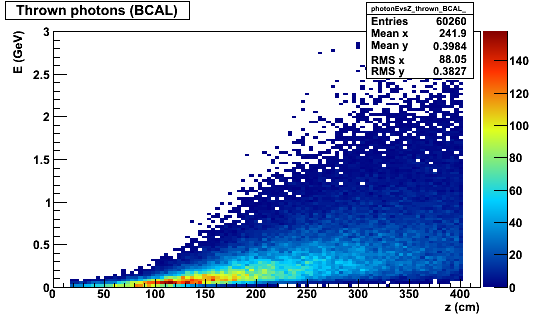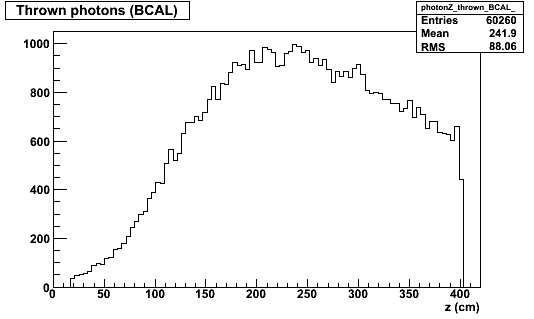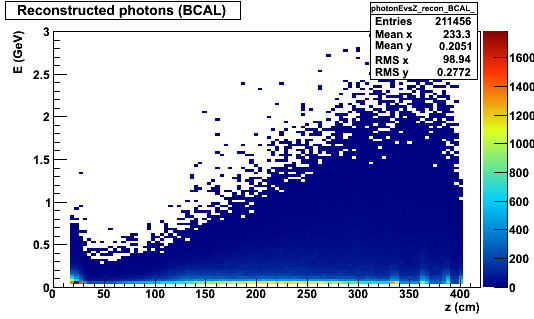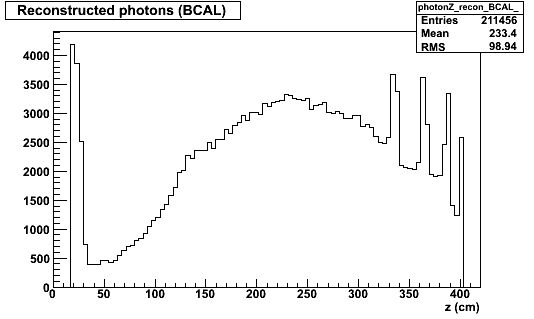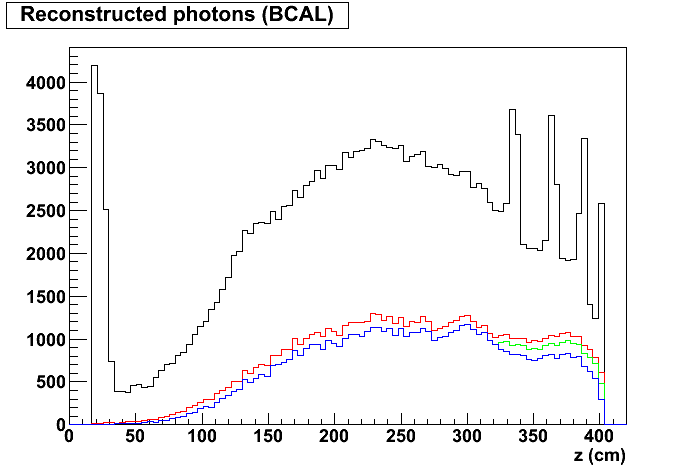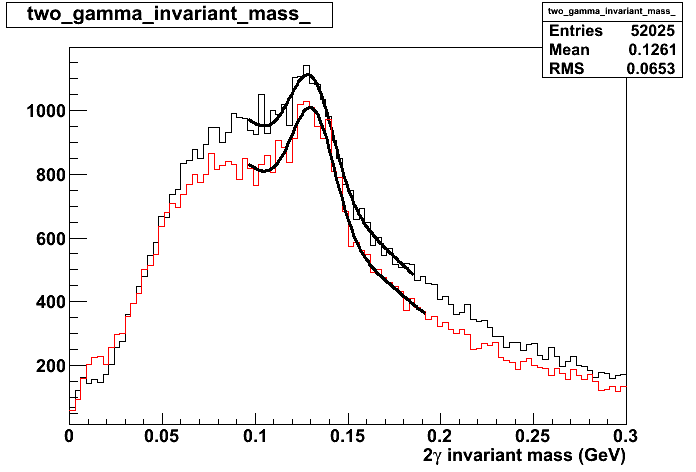Difference between revisions of "Photon Reconstruction in b1pi events 02/10/2012"
(→Two gamma invariant Mass) |
(→Reconstructed photons) |
||
| Line 13: | Line 13: | ||
Where does each of these peaks come from? | Where does each of these peaks come from? | ||
| + | * Broad peak around 125 cm from protons? | ||
| + | * Peaks at upstream and downstream ends of detector from noise that cause garbage timing info? | ||
| + | * Other three sharp peaks? | ||
A timing cut fabs(t_shower-t_flight) < 1 ns can be applied to remove many of the extra "photons". | A timing cut fabs(t_shower-t_flight) < 1 ns can be applied to remove many of the extra "photons". | ||
Revision as of 18:29, 10 February 2012
BCAL
Thrown photons
For comaparision, useful to use z rather than theta
Reconstructed photons
Where does each of these peaks come from?
- Broad peak around 125 cm from protons?
- Peaks at upstream and downstream ends of detector from noise that cause garbage timing info?
- Other three sharp peaks?
A timing cut fabs(t_shower-t_flight) < 1 ns can be applied to remove many of the extra "photons".
I don't think low energy showers are well understood at the moment, so remove clusters with E<60 MeV.
Also, cut out a problem area at forward angles and lower energies (E<150 MeV && z>300 cm)
Red shows the effect of the timing cuts. Blue shows all the cuts above.
With all cuts:
Number of "photons" decreases from x to y.
Two gamma invariant Mass
Look at pairs of 2 BCAL photons and 1 BCAL+1 FCAL photon, with the cuts described above. Using truth vertex information.
Compare KLOE algorithm to GlueX algorithm.
Black is KLOE, red is GlueX. Fits are to gaussian + straight line.
GlueX has less background, the fit also indicates that it has a taller peak, but I don't know how much this fit can really be trusted.
